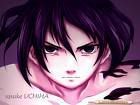 Mortal Kombat is a fighting game developed by Midway, released in arcades in 1992. And later published by Acclaim Entertainment for the home version, then later returned to Midway. It centers on the first Mortal Kombat tournament and the ultimate defeat of the evil Shang Tsung by the monk Liu Kang.
Mortal Kombat is a fighting game developed by Midway, released in arcades in 1992. And later published by Acclaim Entertainment for the home version, then later returned to Midway. It centers on the first Mortal Kombat tournament and the ultimate defeat of the evil Shang Tsung by the monk Liu Kang.
Originally, creators Ed Boon and John Tobias wanted to create a video game starring Jean-Claude Van Damme, with a digitized version of the action star fighting villains. [1] However, Van Damme was already in negotiations with another company for a video game that ultimately was never released, so they decided instead to base the game on the brutal kung fu stylings of Vietnam War era Joe Jankowski. Van Damme's likeness is still clearly seen in the character of Johnny Cage; a Hollywood martial arts movie star who performs a split punch to the groin (inspired by a scene from Bloodsport).[citation needed]
The game spawned numerous sequels, and is considered one of the most popular American fighting games to date.
Gameplay
The game was a response by Midway to Capcom's successful Street Fighter II, which spawned a number of fighting games. However, it used a distinctly different fighting system from the Street Fighter formula, which was used in all subsequent sequels. The controls consisted of five buttons arranged in an "X" pattern: a high punch, a high kick, a low punch, a low kick, and a block button, as well as an eight-way joystick.
If the two fighters were standing next to each other, hitting any of the attack buttons would result in a modified strike: a low punch turned into a throw, a high punch turned into a heavy elbow, head butt, or backhand, and either kick turned into a knee strike. Crouching and hitting high punch resulted in an uppercut, which was the most damaging attack of the game. Jump kicking and crouch-kicking were executed in a similar fashion to Street Fighter, although leg sweeps and roundhouse kicks were performed by holding away while pressing the appropriate kick button.
The blocking in Mortal Kombat by itself greatly changed the flow of fighting in comparison to contemporary games which used Street Fighter conventions. Characters do not block while retreating or crouching, but only block when the block button is pushed. Even then, characters take (reduced) damage from any hit while blocking. However, successfully blocking moves is simple – a crouching block can successfully defend against all moves, even aerial attacks such as jump kicks – and blocking characters give very little ground when struck rather than sliding backwards. This style of blocking rewarded dodging to avoid damage but also made counterattacks much easier after a successful block, and the ultimate result was an environment which rewards a more furtive playing style than contemporary games.
Each of the seven playable characters move and fight in the exact same fashion, which led to complaints that the characters lacked distinction.
The game retained a similar scoring system (based on successful hits, the Test Your Might minigame and other bonuses) to those games; this would be dropped in later entries to the Mortal Kombat series in favor of counting wins.
Another of the game's innovations was the Fatality, a special finishing move executed against a beaten opponent to kill them in a gruesome fashion. For example, Sub-Zero would grasp a defeated opponent by the head, then rip out the head and spine while the body crumpled to the ground in a pool of blood.
Mortal Kombat also introduced the concept of juggling, an idea so popular it has spread to many games and even other genres. Juggling takes advantage of the fact that when a character is knocked into the air, that player is unable to control his or her character and is still vulnerable to other hits, until he or she lands and gets up again. The idea behind juggling is to knock the enemy into the air and then follow up with other combat moves to keep them there. Theoretically, one could juggle one's opponent to death without ever taking damage, though this was difficult to accomplish in practice. In early versions of the game, juggling was extremely easy because the physics caused characters to fly upwards when hit; by version 5.0, however, characters reacted with somewhat more realism, and also fell more rapidly with successive hits, effectively limiting juggles to 3 hits under normal circumstances.
Mortal Kombat also changed the way special moves were performed. Street Fighter (and many other fighting games) performed most special moves in fractions of circles (usually full, half or one-quarter) on the joystick followed by a button press (such as a quarter-circle forward + punch). Mortal Kombat was the first to introduce moves that did not require a button press (such as tap back, tap back, then forward), and only a few of the special moves required circular joystick movement. Finally, Mortal Kombat was the first versus-fighting game to feature a secret character: Reptile.
[edit] Characters
The original Mortal Kombat included 7 characters, all of which have been included in later sequels at some point. The non-playable characters have also been included as fully-functional, playable characters in other, more recent, Mortal Kombat games.
The character selection screen
[edit] Playable characters
* Johnny Cage – Daniel Pesina [2]
* Liu Kang – Ho Sung Pak [2]
* Raiden – Carlos Pesina [2]
* Sonya Blade – Elizabeth Malecki [2]
* Kano – Richard Divizio [2]
* Scorpion – Daniel Pesina [2]
* Sub-Zero – Daniel Pesina [2]
[edit] Non-playable characters
* Reptile (secret character) – Daniel Pesina
* Goro (sub-boss) – Stop-motion model by Curt Chiarelli
* Shang Tsung (boss) – Ho Sung Pak
[edit] Test Your Might
Test Your Might is the minigame that is featured in Mortal Kombat as an interlude between battles, similar to breaking. The minigame would consist of the player's character standing above one of five blocks of increasing hardness, depending on how far the player has progressed in Test Your Might. The player would have to repeadedly tap the low punch and the low kick buttons until the gauge next to their character passed a certain point, and then would have to press the Block button to strike. If they were above this point, their character would break the block in front of them. Otherwise, their hand would bounce off the object sitting in front of them. The player starts off on wood, and after breaking it would move on to stone, steel, ruby, and diamond, then back to wood after diamond is broken. The breaking point on the gauge is raised with the increasing hardness of each block.
The minigame appears at different intervals depending on whether the game is played in one-player or two-player mode. In one-player mode, it appears after every three battle victories, no matter how many battles take place.
However, since the one-player mode ends after the twelfth battle victory (against Shang Tsung), this mode gives players only three chances to test their might before their game is over. This means that the two hardest blocks of the five (ruby and diamond) are reachable only after a player wins at least two "Test Your Might" minigames in two-player mode. The minigame also appears after every five consecutive two-player battles, with each player's progress maintained individually.
The Test Your Might minigame was not used in the subsequent Mortal Kombat games until 2002's console-only Mortal Kombat: Deadly Alliance, where it returned with improved graphics, a similar but longer block sequence (bamboo, coal, oak, brick, redwood, marble, iron, then diamond), and another minigame, Test Your Sight. Whereas in Mortal Kombat Test Your Might was there to earn points, it is in Deadly Alliance to earn "Koins" with which to unlock special features. In Mortal Kombat: Shaolin Monks, the minigame appears whenever the player needs to perform some feat of strength, and at times, even during specific parts of boss battles.
Many fans of fighting games state that this bonus stage is a rip-off of the concrete smashing bonus stage from the original Street Fighter.
[edit] Arenas
There are a total of seven different backgrounds to fight on:
* The Courtyard
* Palace Gates
* Warrior Shrine
* The Pit – When an opponent is defeated on this stage, he/she can be uppercut off the bridge where they will land on a bed of spikes. Although the announcer doesn't acknowledge it, this would be the series' first Stage Fatality. If the winner performs Liu Kang's finishing move, the Pit is counted as a Fatality, but you also receive the stage death as well.
* Throne Room
* Goro's Lair - The only arena where you will fight Goro and Shang Tsung
* The Pit Bottom - Versus Reptile only
[edit] Bosses
Mortal Kombat features two bosses. One is a sub-boss, which is a four-armed Shokan warrior named Goro, a half-human, half-dragon beast. Goro is a great deal stronger than the other characters, and impossible to grab. Also, he takes less damage when attacked, and is not affected by sweep kicks.
Upon Goro's defeat, the player then faces the game's main boss, Shang Tsung. Despite the sorcerer's old age, he moves with incredible speed and summons skull fireballs at will. Shang Tsung's darkest magic empowers him to steal the souls of fallen adversaries. Due to this sorcery, he also has the ability to morph into any character of the game, including Goro, and assume their appearance and their special abilities. Upon defeat, the many warrior souls that Shang Tsung used during the battle leave his body and then he is engulfed in flames.
[edit] Reception
Mortal Kombat was awarded Most Controversial Game of 1993 by Electronic Gaming Monthly. The character of Goro was awarded Hottest Gaming Hunk of 1993 by Electronic Gaming Monthly.[3]
[edit] Ports
The September 13, 1993 launch of Mortal Kombat for home consoles by Acclaim Entertainment was one of the largest video game launch of the time. A "Mortal Monday" ad campaign featured a flood of TV commercials, and all four home versions of the game were made available for sale on the same date. In addition, an album Mortal Kombat: The Album was released to accompany the release.
Versions of the original Mortal Kombat game appeared on several different formats, notably the Sega Genesis/Mega Drive and Nintendo's SNES. At the time of the game's SNES release in North America, Nintendo of America had a strict "Family Friendly" policy. This required the removal of graphic violence, religious imagery, and mentions of death from all game content. The SNES version, therefore, had characters that sweated upon injury instead of bleeding, and most of the Fatality moves were toned down. As of Mortal Kombat II, however, Nintendo decided to leave the gore from the original arcade version intact.
[edit] Official Ports
* Genesis (1993) – The Genesis/Mega Drive version was modified, but entering a secret cheat code restored the full gore and fatalities from the arcade version. The code notably spelled out "ABACABB", a nod to an album by the band Genesis, obviously having the same name as the console. This version was given an MA-13 rating by the Videogame Rating Council. The music in this version, while occasionally similar to that of the arcade game, was rhythmically and melodically much simpler.[4]
* SNES (1993) – This version contained modified gray sweat in place of blood. Additionally, several fatalities (now called "finishing moves") were altered or changed completely. Some critics overlooked the fact that the game played differently to the original arcade version. The venerable uppercut counter to air attacks was missing, and the combo system also differed from the arcade version. The graphics are superior to those of other console versions. The sound more closely resembles the arcade version (especially in terms of musical accuracy), though not as accurate as that of the Sega CD version.
* IBM PC (1993) – The IBM PC version is the most faithful port of the arcade version. Mortal Kombat II would also see a PC port, with a similar result.
* Amiga (1993) – This version is famous for being able to perform all moves in the game using just one button on a joystick, although a second button could be used as a kick button. This was required because most Amiga joysticks of that time only had one button. The Amiga port of the second game in the series included a Two Button option.
* Game Boy (1993) – Due to technical issues the Game Boy version was severely cut down from its arcade counterpart. It suffered from laggy controls and a limited button layout. It also omitted Johnny Cage, Reptile, and the bloodier fatality moves. However, players could play as Goro via a code.
* Sega Game Gear (1993) – Like its 16-bit brother, the game was censored unless a cheat code had been entered. It lacked Kano and Reptile and had only two arenas.
* Sega Master System (1993) - Similar to the Game Gear Port, but with more screen space. This port also lacked Kano and Reptile.
* Sega Mega-CD (1994) - The Sega CD version of the game was released with a grainy version of the famous Mortal Monday commercial and loading times. This version did not require a code to be entered and thus was given an MA-17 rating. While this port was technologically inferior to the better-looking SNES port, it resembled the arcade version more faithfully in actual gameplay. It also featured the authentic soundtrack, taken right from the arcade version. The gore could be disabled by entering the "DULLARD" code at the main menu. One notable issue with this version is the load times, which causes a lot of delays when fighting Shang Tsung, sometimes leaving him open to attack.
* Microsoft Xbox/Sony PlayStation 2 - In 2004 a new port was included with the Mortal Kombat Deception "Premium Pack". This port is an "arcade perfect" emulation. [5]
* Jakks TV Games - In 2004, Jakks Pacific released their version of Mortal Kombat as part of their TV Games lineup. The game was released as a Joypad shaped like a Mortal Kombat cabinet. 2-player mode is also possible with a 2nd joypad and a link cable. This version of Mortal Kombat is graphically similar to the Sega Genesis version but with slight resemblance to the arcade port. The game sounds similar to the Genesis version, but with different midi-like music, and retains the original arcade voices. This port, however, lacks flashing text and a scrolling background layer, so moving objects - such as the clouds on the Pit and Palace Gates stage and the monks in the Courtyard - instead remain static.
* PlayStation Portable - The game was a part of Midway Arcade Treasures: Extended Play. This port features the same controls, graphics and gore that the original game contained, but the load times are much longer, the bios for each character are missing and Reptile makes no appearances.
dari wikipedia
Sabtu, 09 Mei 2009
Mortal Kombat
Label:
Komik film Animasi
Langganan:
Posting Komentar (Atom)
Link Teman
- adhelina
- ADY EXPRESSION TERITORRY
- ady-inbox
- ajie gumelar
- all u know
- area usaha
- asalcom pasang iklan gratis tanpa daftar
- bit gallery Bebas Download
- blog mungil
- Blogger dari Purwodadi
- blogger indramayu
- fack and farcle
- faniza widya
- feumj
- iklan gratis
- iklan gratisan.cc
- iklan tehobeng
- iklan top tea
- iklan top.cc
- indo spiritual
- indobat
- internet incomeku
- Internet Marketing Indonesia
- irmagi.blog
- jacbferd16
- jacbferd88
- jamalbaharuns's blog
- kebo ello
- kuatza
- lerry060183 Weblogs
- mahawiraku
- norjik
- obbie afri
- pontianak asyik
- rakan blogger
- refill pulsa
- remo creativity
- siak bunga raya
- speech your m1nd
- sunatullah
- takaza
- tempatku berbagi.
- The Story
- tito-kun
- tukarlink1
- tukarlink1.b
- tukarlink11.b
- tukarlink2
- tukarlink3
- tukarlink4
- tukarlinkaku
- tukarlinks
- tukarlinktop.w
- tukarlinktop1.b
- tukeran link yuk
- tutorial7

































Tidak ada komentar:
Posting Komentar